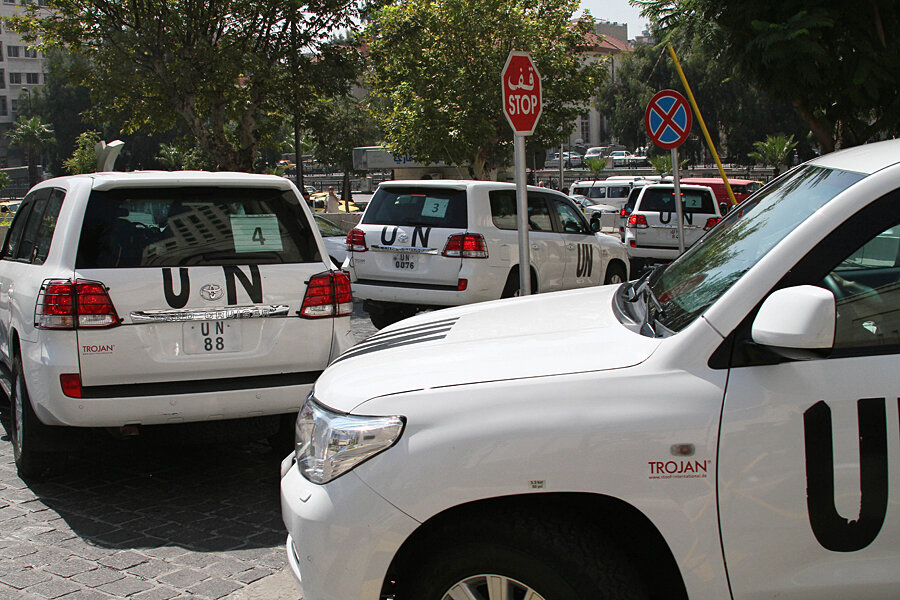Syria chemical weapons inspectors shelter in Damascus after surviving ambush
Loading...
A daily roundup of terrorism and security issues.
An international team investigating reports of chlorine attacks in Syria is in Damascus after surviving an ambush in rebel-held territory on Tuesday.
Both the Syrian regime and rebel groups blamed each other for the attack, underscoring their bitter enmity and the difficulty of conducting international missions in Syria. The incident occurred less than a week before Syria's June 3 presidential election.
The inspectors from the Organization for the Prohibition of Chemical Weapons were on a fact-finding mission to rebel-controlled Kafr Zita, where opposition groups accuse the regime of using chlorine gas against rebels and locals. The first vehicle in their convoy was hit by a roadside bomb, according to a press release from the organization:
Shortly after leaving government-controlled territory, the lead vehicle in the convoy was struck by an improvised explosive device (IED) sustaining severe damage. The team members were rescued and shifted to two other vehicles in the convoy which turned back to move to a safer location. While entering a built-up area the convoy was ambushed; the first vehicle was shot at from close range with automatic weapons hitting the body, windows and tires.
The OPCW reports that it had negotiated a cease-fire between the regime and rebel groups before the fact-finding trip. After the ambush their inspectors were “briefly detained by some gunmen,” but released after “the intervention of the main opposition group with whom the ceasefire security arrangements had been negotiated,” the group says.
The Syrian Foreign Ministry first reported the attack and said that “terrorist groups,” a reference to rebel groups, had kidnapped the inspectors. Antigovernment groups responded that the government staged the attack so that the OPCW investigators would not reach the town, The New York Times reports.
The Violation Documentation Center, a Syrian NGO that monitors human rights abuses, has documented at least 14 suspected chemical attacks this year, reported The Christian Science Monitor’s Nicholas Blanford. This includes a “significant increase in April from explosive barrels dropped from helicopters,” many of which allegedly contained chlorine gas:
In recent weeks, the village of Kfar Zita in Hama Province was hit three times by barrel bombs dropped from helicopters, killing one and wounding 132 people. Video footage released by Syrian activists after the first attack on April 11 showed men, some of them convulsing, lying on the floor of a clinic struggling to breathe. Other videos showed unexploded yellow metal cylinders with the CL2 symbol for chlorine gas. Witnesses described smelling chlorine and seeing yellowish smoke wafting through the streets.
Chlorine gas reacts with moisture in the throat and lungs and turns into hydrochloric acid. In large concentrations it can be lethal. Chlorine gas bombs were used by insurgents in Iraq between 2006 and 2007, although with limited effect, and both the Germans and the British used it during World War I.
The Chemical Weapons Convention does not specifically ban chlorine, a common industrial chemical, but its use as a weapon is outlawed under the convention’s “general purpose criterion,” reports Mr. Blanford.






